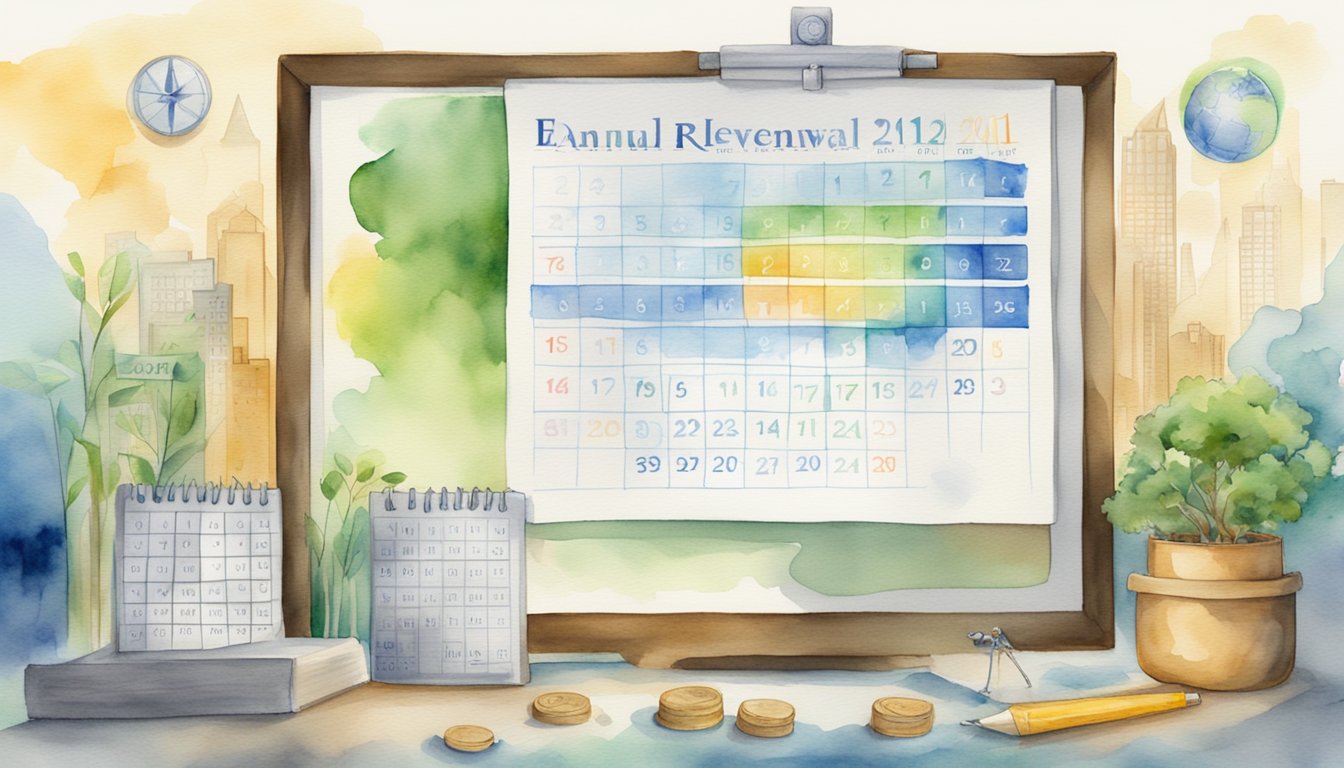Understanding Annual Renewable Term Life Insurance
Annual renewable term life insurance (ART) offers flexible and annually adjustable coverage that can be renewed each year.
This type of policy is ideal for those with changing insurance needs.
Definition and Explanation
Annual renewable term life insurance is a type of policy that provides coverage for one year at a time.
You pay premiums annually, and the policy can be renewed each year.
The main advantage of ART is its flexibility.
It allows you to reassess your coverage needs yearly.
Typically, premiums start lower compared to other life insurance policies but increase as you age.
As you get older or if your health declines, the cost of renewing the policy rises.
This makes ART suitable for younger, healthier individuals who may need temporary coverage or have changing financial situations.
With ART, no long-term commitment is required.
Some insurers might require a medical exam at renewal, but typically, these policies are simpler to initiate.
ART policies are often used to cover short-term debts or income replacement for a set period.
Assessing Annual Renewable Term Relevance
Selecting an annual renewable term life insurance depends largely on your age, health, and insurability.
Younger individuals with excellent health often find ART premiums more affordable initially.
However, as you age, these costs will increase, potentially making other types of policies, like level term, more cost-effective over time.
Insurance needs should be carefully evaluated.
ART is ideal if you anticipate changes in your financial situation, such as paying off a mortgage or seeing children become financially independent.
Additionally, it’s suitable for those wanting coverage without a long-term commitment or for high-risk occupations since it provides flexibility to adjust annually.
Consider your total death benefit needs and whether ART’s flexibility aligns with your longer-term goals.
If you foresee significant health changes or extended financial responsibilities, other options might be more appropriate.
Always compare ART with other policies and assess annual premium increases before deciding.
Applications of Annual Renewable Term
Annual Renewable Term (ART) Insurance offers unique advantages and flexibility in the insurance industry.
Short-Term Needs
This type of policy is ideal for covering short-term debts and temporary financial obligations.
If you need coverage for just a few years, ART provides a useful solution without committing to long-term policies.
Flexibility and Conversion
ART policies are convenient for those looking to eventually switch to more permanent options.
You can later convert these policies into whole life insurance or universal life insurance, often without undergoing additional medical exams.
Cost and Affordability
Early on, ART policies tend to have lower premiums compared to long-term options like permanent life insurance.
This makes them attractive if you’re looking for affordable coverage that you can renew annually.
Estate Planning
For those involved in estate planning, ART can serve as a bridge, offering coverage until you can fully switch to a permanent policy.
It ensures that your family and loved ones are protected in the interim.
Gender and Cost
Premiums in ART policies may also vary based on gender and health status.
For a healthy male in his 30s, rates might be more favorable initially.
You can see such metrics evaluated in details like gender and health status impacting rates.
Additional Features
You can often add riders to your ART policy.
Riders provide extra benefits like critical illness coverage, enhancing the basic policy’s utility and ensuring broader protection for various circumstances.
Related Industry Terms

Term Life Insurance: This type of insurance provides coverage for a specific period, known as the term length.
Premium payments are made during this term, and the policy pays a death benefit if the insured person passes away during this period.
Annual Renewable Term Life Insurance: This policy allows you to renew coverage each year without proof of insurability.
Premiums may start low but will increase annually.
Level Term Life Insurance: This policy has a fixed premium rate for the entire term length, which could be 10, 20, or 30 years.
The death benefit also remains constant.
Permanent Policy: Unlike term life policies, permanent life insurance provides coverage for your entire life.
These policies often include a savings component, allowing you to build cash value over time.
Group Life Insurance: Often offered by your employer, this type of insurance provides coverage for a group of people under a single policy.
It is usually less expensive than individual term life insurance.
Mortgage Protection Insurance: Designed to pay off your mortgage in the event of your death, this insurance ensures that your family can stay in their home without financial worries.
Spousal Insurance: Policies that provide coverage for your spouse, ensuring financial support in case they pass away.
Short-Term Life Insurance: A temporary insurance policy with a term length typically less than one year.
Useful for covering immediate needs.
Disadvantages: Higher renewal costs and increasing premium rates over time.
Some may find it more expensive compared to level term life insurance.
Advantages: Flexibility in renewing coverage annually and not needing to prove insurability adds convenience and ease.
Accelerated Death Benefit: This feature allows you to receive a portion of your death benefit while still alive if diagnosed with a terminal illness.
Waiver of Premium: This benefit waives your premium payments if you become disabled and cannot work.
Frequently Asked Questions

This section covers key questions about annual renewable term life insurance, including its benefits, renewal process, and how it compares to other policies.
What are the advantages and disadvantages of an annual renewable term life insurance policy?
Advantages include flexibility and not requiring a medical exam for renewal periods.
Disadvantages can include increasing premiums and potentially higher costs over time compared to level term policies.
What typically changes when an annual renewable term life policy is renewed?
The primary change is the annual premium, which typically increases as the insured person ages.
Coverage amounts generally remain the same unless you make adjustments.
How does annual renewable term life insurance differ from level term life insurance?
Annual renewable term life insurance requires renewal each year with premiums that increase annually, while level term life insurance maintains the same premium and coverage throughout the term.
What is the process for renewing an annually renewable term life insurance policy?
Renewal usually involves an automatic process where the insurer continues the coverage each year.
You do not need to reapply or take a new medical exam, making it seamless for policyholders.
Is evidence of insurability required to renew an annually renewable term policy?
No, evidence of insurability is typically not required for renewal.
This means you don’t need to provide health information or undergo a medical exam to continue your coverage.
How does annually renewable term reinsurance function in the industry?
Reinsurance helps insurers manage their risk by allowing them to share potential losses with other insurance companies.
In annual renewable term life insurance, reinsurance agreements can stabilize costs and premiums for the insurer.
More details can be found in the definition of renewal and application.






